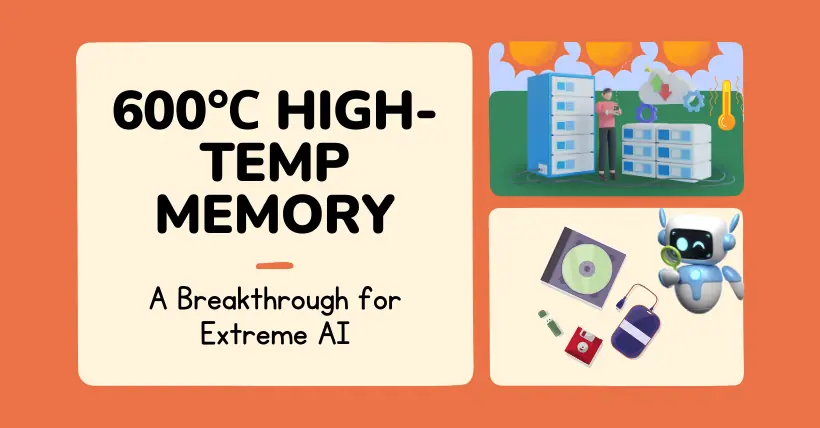Recently, scientists at the University of Pennsylvania have developed a memory device that can operate continuously at 600°C for 60 hours. Currently, mainstream market memory devices can withstand temperatures up to 200°C; exceeding this limit results in failure, leading to equipment malfunctions and data loss. Therefore, this new memory’s tolerance temperature is more than twice that of current commercial memory devices, indicating its exceptional reliability and stability.
This new type of memory is expected to excel in extreme environments that could otherwise cause electronic or storage devices to fail, providing a foundation for intensive computing in artificial intelligence systems under harsh conditions. The relevant paper has been published in the latest issue of Nature Electronics.
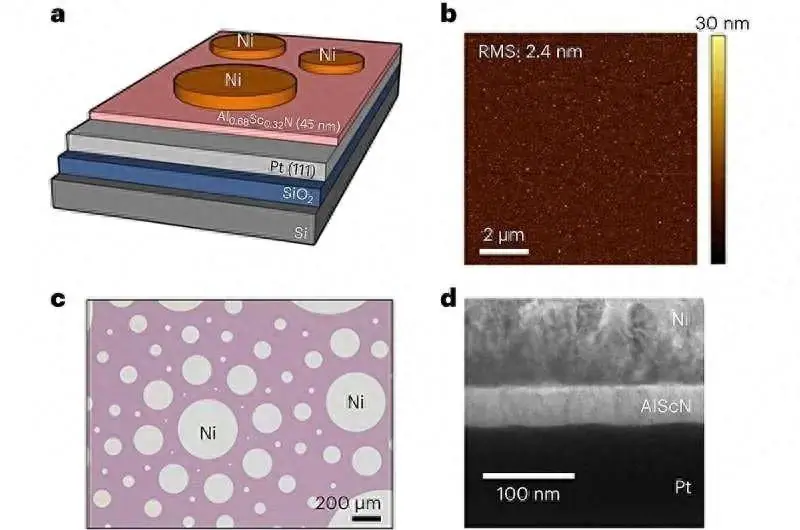
01
High-Temperature Memory Technology Continues to Break Through
Developing high-temperature memory is crucial for deploying applications in extreme environments. For instance, in Logging-While-Drilling (LWD), an advanced logging technique, data is crucial for decision-making in wellbore trajectory control. However, due to the high temperature of the drilling environment, much data cannot be stored, making it challenging to obtain accurate geological information and impeding further equipment development. Similar situations exist in industrial manufacturing, where valuable data from high-temperature equipment often remains unavailable due to memory constraints.
Applications like LWD generally require storage devices to tolerate temperatures up to 150°C. Traditional memory devices typically withstand temperatures ranging from -40°C to 125°C, making 150°C a critical benchmark. In 2021, Japanese startup Floadia developed a flash memory that could store data for ten years at 150°C, achieving 7 bits per cell (7bpc).
Floadia’s innovation involved a structure and material redesign. Based on a silicon-oxide-nitride-oxide-silicon (SONOS) layout, it adopted a distributed charge-trapping structure with a silicon nitride film that securely traps charges. Materials like silicon dioxide (SiO2) and silicon nitride (Si3N4) were used, enabling the flash memory to tolerate temperatures up to 150°C and withstand over 100,000 program-erase cycles.
In reality, high-temperature memory devices have been capable of handling up to 200°C since before 2018, and research on memories that can operate beyond 200°C remains at the forefront of technology. In 2018, a research group led by Professor Miao Feng from Nanjing University and others from the University of Massachusetts developed a memristor that could operate at 340°C. This device used a two-dimensional layered MoS2-xOx-graphene sandwich structure to achieve high robustness and withstand ultra-high temperatures and strong stress.
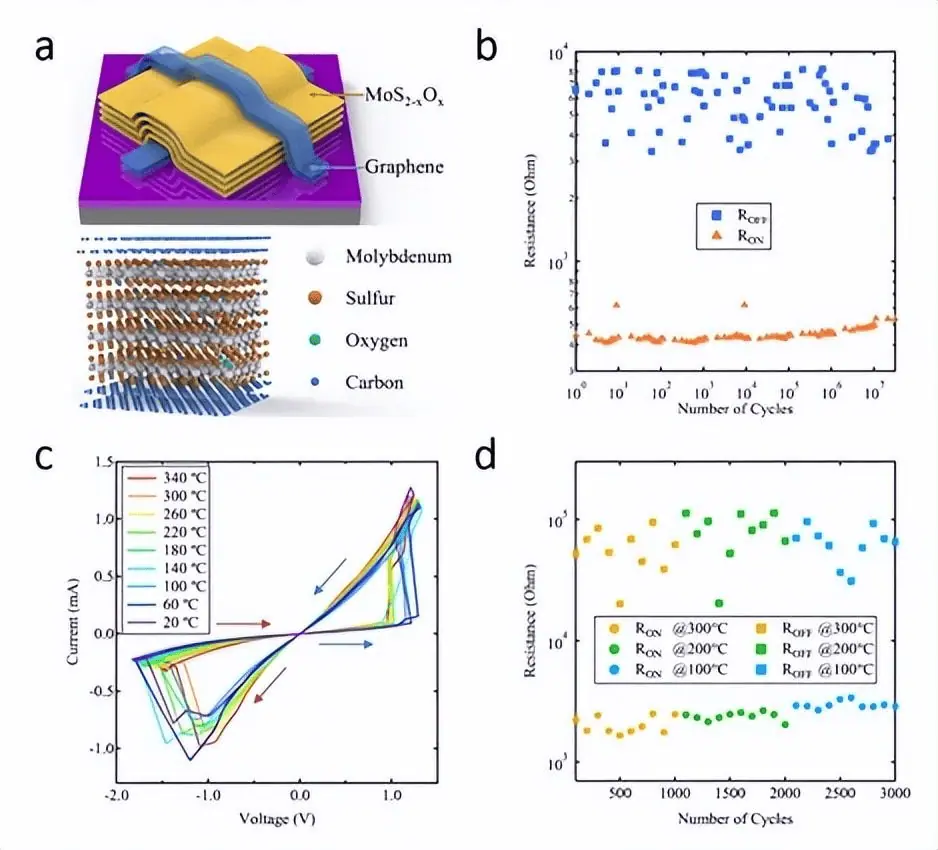
This novel structure and material allowed the memristor to have a write/erase speed of under 100 ns, with write/erase cycles exceeding 10 million. It could operate stably at 340°C, and the findings were also published in Nature Electronics.
02
New Memory Using AlScN
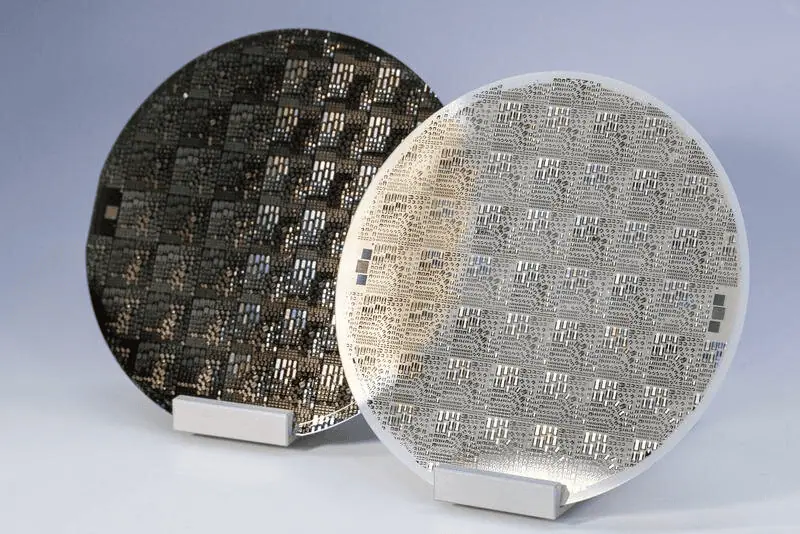
Material innovation is crucial in memory advancements, and many cutting-edge storage research achievements involve this aspect. In the University of Pennsylvania team’s project, they utilized ferroelectric aluminum scandium nitride (AlScN).
The team developed a nickel/AlScN/platinum metal-insulator-metal structure grown on a 4-inch silicon wafer. Last year, Deep Jariwala, Roy H. Olsson III, Nicholas R. Glavin, and others published research on AlScN in Nature Nanotechnology. In that paper, the team developed an extremely thin memory device by stacking a ferroelectric layer of AlScN on a two-dimensional semiconductor known as molybdenum disulfide (MoS2), achieving the smallest area per memory cell.
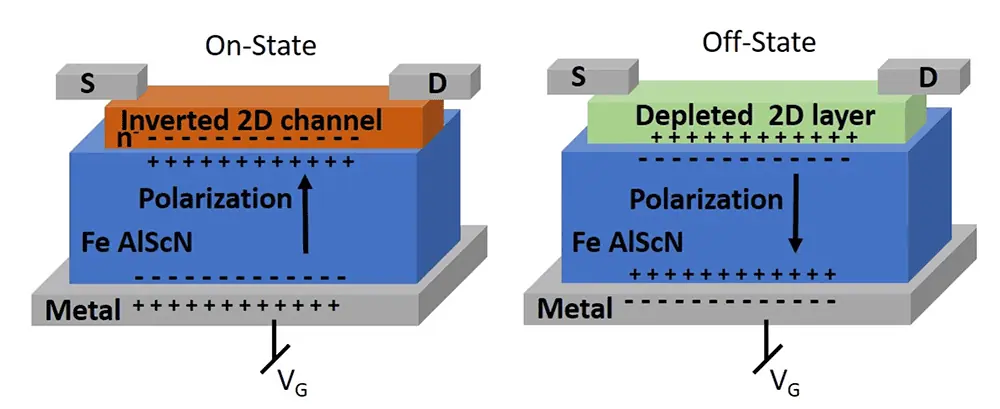
In the latest research, the University of Pennsylvania team used AlScN to break the high-temperature memory record. The memory device is composed of a metal-insulator-metal structure, with nickel and platinum electrodes and a 45-nm-thick AlScN layer. This design enables the memory to be compatible with high-temperature silicon carbide logic devices and to work seamlessly with high-performance computing systems designed for extreme temperatures. The benefit of AlScN is that it can maintain specific on and off states at higher temperatures.
03
Conclusion
Deploying AI systems in harsh environments can be highly significant because many of these places are inaccessible to humans. However, the inability of traditional memory to handle high temperatures has limited progress in many projects. The University of Pennsylvania team’s latest findings, which have increased memory device tolerance to 600°C, will help bring AI to more extreme environments.

Disclaimer: This article is created by the original author. The content of the article represents their personal opinions. Our reposting is for sharing and discussion purposes only and does not imply our endorsement or agreement. If you have any objections, please contact us through the provided channels.

